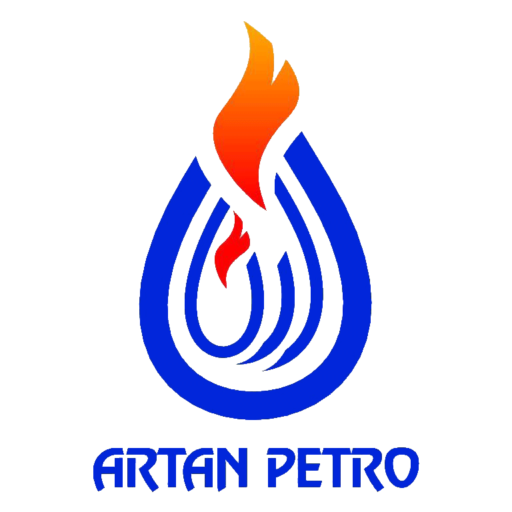


An important analysis of CO 2 adsorption technologies: The use of fossil fuels as an energy source continues to add carbon dioxide to the atmosphere and has devastating effects on the environment.
Scientists around the world are working to reduce the effects of CO 2 emissions, and much research is ongoing at the scientific and industrial levels.
Among the existing CO 2 adsorption technologies, solvent-based technologies are commercially established and used in many industries.
Despite the commercialization of solvent-based technologies, research on CO 2 capture processes is still underway
Vigor seeks to significantly minimize capital and operating costs per tonne of CO 2 absorption, while improving operational reliability.
In the last decade, solid sorbents have been recognized as a very promising technology for the company
With the potential to overcome the existing limitations of solvent-based technologies. This article deals with developments
Recent in commercial solvent-based technologies and their economics Comparison with a hydrated adsorbent process specific to the recording company has recently been developed by co-authors

An important analysis of CO 2 adsorption technologies
The rapid growth of the global industry will increase CO 2 emissions from the pre-industrial level of 280 ppm in 2018 to 407.4 ppm – from 2.4 ppm in 2017 – and at a rate of approximately 1.5 ppm / yr-2.5 ppm / yr is growing.
1 Coal is the second largest source of primary energy: China, India and the United States account for 85% of the net increase in CO 2 emissions.
Combustion of fossil fuels provides more than 85% of energy for industrial activities and is the main cause of CO 2 emissions.
In addition, fossil fuels will remain the main sources of energy for decades to come.
The process of carbon capture and storage (CCS) has the potential to reduce future energy emissions in the world by up to 20%.
3 According to CCS Global Institute CO 2 RE database, in 2018, 23 large-scale CCS facilities were in operation or under construction, capturing ~ 40 MMtpy from the company.
4 Separation of CO 2 from source consumption about 75% of the total cost of the CCS system, which implements the system effects.
5 It is therefore essential to use cost-effective technology to separate CO 2 from flue gas.
Among these technologies, the post-combustion recording method involves higher recording costs per tonne of CO 2, as it involves a dilute concentration of flue gas (i<.
Based on the level of technology readiness (TRL), existing technologies after combustion can be classified into different stages of development.
Combustion, including calcium ring, chemical ring, adsorption after combustion using adsorbent,
Solvent and membrane review and concluded that adsorption after combustion is the highest and successful method for
Recording company using solvent.
In recent years, due to its inherent advantage in the application of a wider temperature range than ambient temperature up
700 ° C, less waste formation while cycling, and the safest solid adsorbent route Most attention
Has attracted.
An important analysis of CO 2 adsorption technologies
Literature in-company capture by adsorption method using porous organic framework, alkali metal carbonate support
And significant CO membranes show recording capacity.
However, high temperatures and the need for resources to regenerate solid adsorbents have a negative impact on overall cost and process time efficiency.
In this article, the latest and most promising advances in post-combustion recording technologies that are on a commercial and commercial scale,
Critically reviewed.
In addition, hydrated CO-specific 2 adsorbent processes are discussed and compared, as well as economic and energy estimates
Its against normal and hinders the amine process.

Two major technologies for post-combustion adsorption are based on solvents and solid adsorbents.
These two technologies, especially in terms of reaction rate, CO 2 adsorption capacity, adsorption temperature /
Reconstruction, cost of capital, corrosion, mass transfer and heat and stability
(Thermal, oxidative and chemical, in which chemical stability reflects the reaction against impurities in the flue gas)
Solvent pathway in absorbing chemicals from source-based companies, such as a coal-fired power plant.
The development of a recording technology company depends on parameters that include energy demand, cyclical capacity,
Solvent stability, reaction, fluctuations, environmental stability and availability.
10 Solvent-Based Technologies are categorized based on the solvent used in the CO 2 adsorption process.
The ordinary amine adsorption process is applied to the flue gas (10 kPa CO-15 kPa CO 2).
For recording companies using mono (MEA) as solvent containing adsorption at 40 ° C-
45 ° C and excretion at 115 ° C 120 ° C an aqueous MEA solution
(20% -30% by weight) can achieve a high level of the company 2 recordings (90% or more) due to the rapid process and strong chemical reaction.
Typical minimum peelers are welding tasks for CAAP ~ 3.6 GJ / metric T4 GJ / t metric CO 2 are captured.
In a solvent-based process, the gas and liquid streams come in contact with each other in the opposite direction.
With the potential to reduce large-scale CO 2 power plants, technology developers – such as Mitsubishi Heavy Industries
(KM-CDR process), Linde-BASF (OASE water process) and Carbon Clean Solution Ltd. (CDRMax process) –
Begin to optimize chemical adsorption technology to reduce the operating and overall capital costs of the recording company.
The changes focus primarily on the thermal integration of the CO 2 adsorption system with the power plant and the development of solvent formulations with
Steam demand is lower, solvent circulation is lower than CAAP and solvent degradation is reduced. This process advances
It is possible to reduce the cost and energy intensity of CO 2 after combustion by an estimated 30% compared to a conventional amine pathway.
To overcome CAAP problems, Mitsubishi Heavy Industries (MHI) uses a post-combustion CO 2 adsorption technology called the KM-CDR فر process.
(Mitsubishi Kansai carbon dioxide recovery) has produced.
Uses KS-1 solvent with low energy consumption, low solvent loss and low corrosion.
15 KM-CDR processes can capture more than 90% of CO 2 from a flue gas stream and CO 2 production is more than 99.9% pure.
The use of steam in KM-CDR MHI technology (0.98 metric ton / metric T 1.48 metric ton / metric ton CO 2) is less than CAAP.
To date, MHI has commercialized 13 CO 2 uptake plants for the production of methanol fertilizers.
The world’s largest CO company captures power plant (4,776 m tpd) in a coal-fired power plant
Petra Nova Parish Holdings LLC was acquired by MHI in 2016.
Production of General purpose polystyrene with different grades

info@artanpetro.com
Qom Shokouhieh Industrial Town, end of the second phase, Babaei Square, Babaei St., Alam al-Huda St. 1, No. 1331
+982533346396![]()
+982533346473![]()